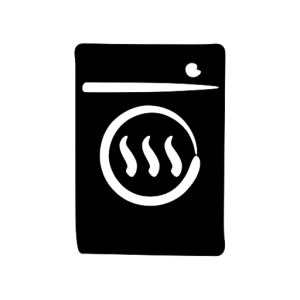My electric range isn’t baking
When your electric range fails to bake properly, it not only disrupts meal preparation but also raises concerns about the appliance's condition. Before you consider a costly replacement or professional repair, there are several troubleshooting steps you can undertake. This guide delves into common reasons why an electric range isn't baking and offers targeted solutions to get you back to baking in no time.
Common Reasons Your Electric Range Isn't Baking
1. Faulty Heating Elements
The most common issue is a malfunctioning bake element. If the element doesn't glow red hot when the oven is turned on, it's a clear sign that the element may need replacement.
2. Malfunctioning Temperature Sensor
The temperature sensor works with the oven's control board to regulate the oven temperature. A faulty sensor can lead to baking issues due to inaccurate temperature readings.
3. Issues with the Bake or Broil Settings
Sometimes, the problem might stem from incorrect settings. Ensure that you've selected the right baking or broiling mode for your recipe.
4. Power Supply Problems
Inadequate power supply can prevent the oven from reaching the required baking temperature. Check if the range is properly connected and receiving the correct voltage.
DIY Solutions for Electric Range Baking Issues
Inspect and Replace the Bake Element
- Visual Inspection: First, visually inspect the bake element for any signs of damage, such as blistering or breaks in the element.
- Testing: With the range unplugged, use a multimeter to check for continuity in the bake element. A lack of continuity indicates that the element needs replacing.
Check and Calibrate the Temperature Sensor
- Inspection: Examine the sensor for any visible signs of wear or damage.
- Testing: Use a multimeter to test the sensor's resistance. Refer to the manufacturer's specifications for normal resistance levels. If the readings are off, replacing the sensor is advised.
Review and Adjust Settings
Double-check the selected settings on your range to ensure they match your baking needs. Refer to the user manual for guidance on selecting and adjusting the correct settings.
Verify Power Supply
Ensure your range is connected to a power source that delivers the required voltage for operation. Consult an electrician if you suspect power supply issues.
When to Call a Professional
If you've followed the troubleshooting steps without success, or if you're unsure about performing any repairs yourself, it's time to seek professional help. A qualified OVEN REPAIR technician can diagnose and fix deeper electrical or mechanical issues, ensuring your range's safety and functionality.
Conclusion
Encountering baking issues with your electric range can be frustrating, but many common problems have straightforward solutions. By understanding and addressing these issues, you can often restore your oven's baking capability without the need for professional intervention. Regular maintenance, including cleaning and inspection of key components, can also prevent future problems. However, for complex issues or when in doubt, relying on professional OVEN REPAIR services is the safest choice to ensure your range operates efficiently and safely for years to come.

























